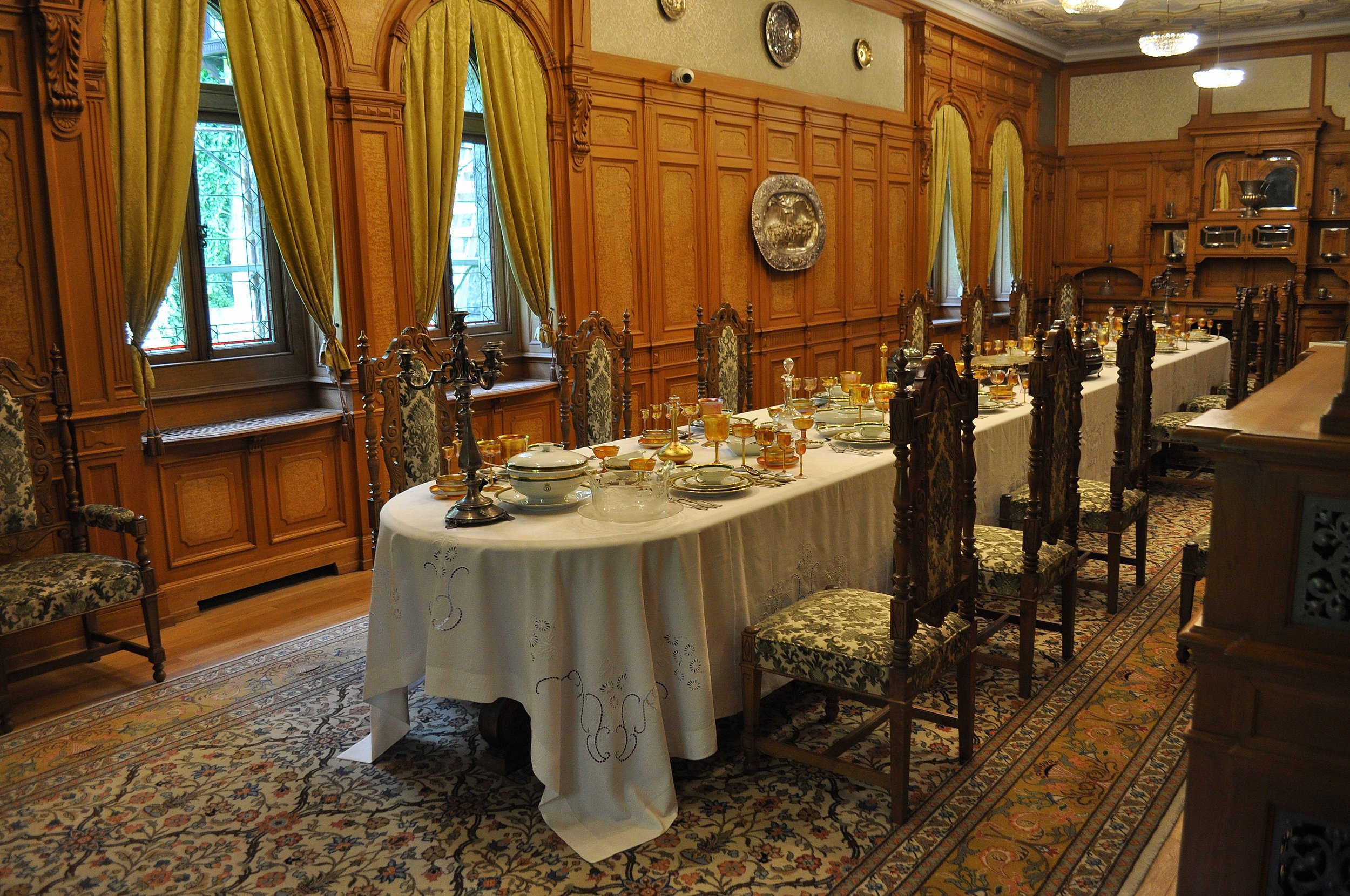The Castles of Sinaia and Dracula’s last shadow
Angela: it's our last day. Sinaia bids us farewell with the fresh air of the Carpathians and the scent of pine resin. We pack our bags slowly, without hurry. Today, the grand finale awaits.
Piero: yes, because here you'll find two of the most beautiful castles in all of Transylvania. And we certainly can't leave without seeing them. Even if it's Sunday… and that’s clear right away: the parking lot is full, the line is long, and visitors' voices echo through the trees.
Angela: but it’s worth it. After a short walk through the woods, suddenly, between the leaves, it appears: Peleș Castle. A vision. A Bavarian dream planted in the Carpathians.
Piero: built between 1873 and 1914 at the request of Carol I of Romania, the country’s first king, it’s a masterpiece of German Neo-Renaissance architecture. The king wanted it not only as a summer residence, but also as a symbol of the new Romania’s modern and Western identity.
Angela: the façade is a triumph of carved wood, pointed turrets, friezes, balconies, and coats of arms. It looks like a fairytale castle. But it’s the inside that truly takes your breath away.
Piero: as soon as we step inside, we find ourselves in the Entrance Hall, with an imposing staircase of carved wood and hand-sculpted panels. The carving is so delicate it looks as if it were etched in silk.
Angela: then comes the Armory Hall, with incredible collections: full medieval suits of armor, halberds, swords, helmets, shields, and even oriental weapons. A museum within the museum.
Piero: we pass through the Reception Hall, with its stained glass ceilings, red velvet sofas, gilded mirrors, and marble columns. Every room has a different style: Moorish, French, Turkish, Venetian...
Angela: Carol I’s Library is a wonder: dark wooden shelves, ancient leather-bound books, and even a secret passage hidden behind a shelf—just like in a mystery novel.
Piero: then there's the Music Room, where even George Enescu once performed. And the Council Room, where the king made decisions with his ministers, surrounded by wood paneling and allegorical frescoes.
Angela: everywhere you look: Persian carpets, Murano glass chandeliers, hand-painted ceramic stoves. And then that atmosphere… not pompous, but intimate, lived-in.
















Piero: we’ve seen many beautiful castles, but we leave this one truly dazed. Just a short walk away is Pelișor Castle, built in the early 1900s for the future King Ferdinand and his wife, Queen Marie.
Angela: if Peleș is elegant and monumental, Pelișor is personal, romantic, full of soul. Its style is more modern—Art Nouveau with Celtic and Eastern influences. A castle for artists.
Piero: you can feel Marie’s presence in every corner. In the brightly colored stained glass, in the furniture designed especially for her, in the crowned heart symbols that appear everywhere.








Angela: the most famous room is the Golden Room, created at the queen’s request. The walls are covered in gold leaves on a white background, with plant motifs and Celtic crosses. A private, mystical, luminous sanctuary. This is where Marie loved to meditate and reflect.
Piero: we end the visit a bit moved. Two castles so different, yet both deeply connected to the identity of this nation. Discover them with us in this video.
Angela: we head back to our van. It’s time to leave, but before we say goodbye to Romania, there’s one last place to visit. One that brings us back to the beginning: the legend of Dracula.
Piero: we drive toward Bucharest, but just before the airport, we turn northeast, heading to the Snagov Monastery.
Angela: it’s located on a small island in the middle of a lake, connected to the mainland by a narrow bridge. The air is still, the water’s surface reflects the willows, and the sky is deep, clear blue.
Piero: the monastery, founded in the 11th century, was fortified in the Middle Ages and restored several times. It’s small but full of atmosphere. Inside, ancient frescoes, darkened icons, and soft light filtering through the arched windows.








Angela: in the center of the nave, there is a simple stone slab with a cross. It is said to be the tomb of Vlad Țepeș. According to legend, after his death in battle, monks recovered his body and secretly buried it here to protect it from desecration.
Piero: but the truth, as often happens, gets lost between history and legend. Excavations in the 1930s found no human remains. The tomb could be elsewhere. Yet this place, with its silence and the lake surrounding it, seems made to keep a mystery.
Angela: we pause for a moment in the courtyard. Time stops too. Our journey began with Dracula and ends where he might truly rest.
Piero: then we get back into the van for the final stretch to the airport. But we take something with us: the stern beauty of Transylvania, its castles, its legends, its silences.
Angela: and as always, our van that brought us here, step by step, like a trusted companion.





















